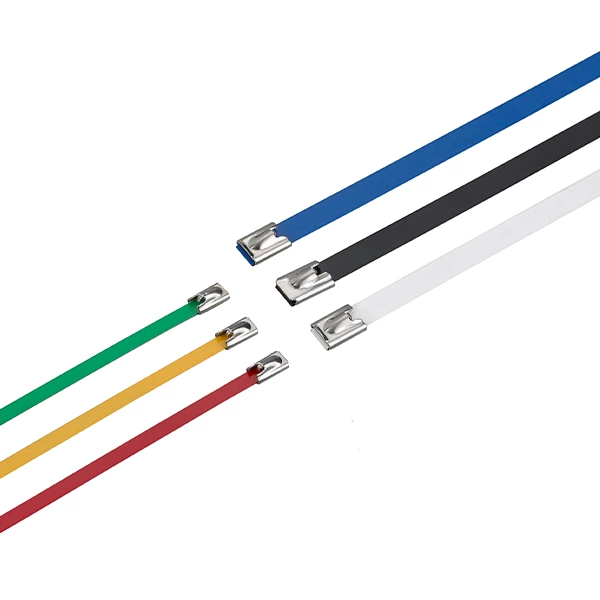Analysis Of Stainless Steel Cable Ties Applications And Industry Advantages
With advancements in technology and production processes, stainless steel cable tie have become a widely used tool across various industries due to their superior performance. Whether in industry, construction, or daily life, stainless steel cable ties have penetrated into various fields thanks to their strong securing capabilities, high-temperature resistance, and corrosion resistance. This article will explore the application scenarios, common uses, industry applicability, and how to choose the right cable ties, ultimately helping you better understand their importance.
Where Stainless Steel Cable Ties Are Suitable
metal zip ties have a wide range of applications, suitable for securing, bundling, or securing applications. They are particularly ideal for applications involving high temperatures, harsh environments, or those requiring high material quality. For example, in the power industry, petrochemical industry, and transportation, equipment and pipelines are often exposed to extreme conditions, where traditional plastic cable ties are insufficient. Stainless steel cable ties, with their corrosion resistance and high load-bearing capacity, maintain stability in these challenging environments.
Common Uses for Stainless Steel Cable Ties
Cable Fixing and Pipe Bundling
In the power and telecommunications industries, metal cable ties are often used to secure cables and pipelines. They not only effectively prevent cables from becoming dislodged due to vibration, external forces, or environmental fluctuations, but also prevent aging problems caused by high temperatures and humidity. In practice, many power companies choose stainless steel cable ties for bundling high-voltage cables to ensure stable power system operation.
Temporary Support and Reinforcement in the Construction Industry
In the construction industry, the strength and durability of stainless steel zip ties make them an ideal choice for temporary support and structural reinforcement. For example, during construction, workers use stainless steel cable ties to secure scaffolding and pipes to ensure structural stability. Their corrosion resistance allows them to withstand long-term use in various weather conditions and is not susceptible to damage.
Types of Stainless Steel Cable Ties
Stainless steel cable ties come in several types depending on the application. Common types include:
1. Self-locking Stainless Steel Cable Ties
> These ties feature a self-locking mechanism on the head and are suitable for applications requiring strong securing force. They are quick to install and ensure the tie will not loosen during use.
2. Ordinary Stainless Steel Cable Ties
> Ordinary steel cable ties generally lack a self-locking feature and are suitable for simpler applications where high-strength securing is not required. While relatively inexpensive, they may not meet the demands of some high-load applications.
3. Retractable Stainless Steel Cable Ties
> Suitable for applications requiring flexible length adjustment, such as automotive repairs and temporary repairs in industrial equipment.
Industry Applications
Stainless steel cable ties have important applications in a variety of industries:
Electric Power and Communications Industry
In the power and communications industries, securing cables and lines is crucial, especially in harsh environments. steel zip ties play a key role in this regard. They withstand high and low temperatures, as well as severe climate fluctuations, and are essential tools for the installation and maintenance of power equipment.
Petrochemical Industry
Petrochemical equipment is often exposed to high temperatures and corrosive gases, and ordinary materials often lack sufficient resistance. stainless zip ties, however, can withstand long-term use in these environments, ensuring the secure retention and safety of pipes and equipment.
Choosing the Right Stainless Steel Cable Tie: What to Consider
When choosing stainless steel cable ties, the following factors must be considered:
1. Material
> Choosing the right material for stainless cable ties is essential for ensuring their stability and durability. Generally, 304 and 316 stainless steel cable ties are widely used. The former is suitable for most environments, while the latter is more suitable for highly corrosive environments.
2. Strength
> The strength of a stainless steel cable tie determines whether it can meet the fixing requirements of a specific application. Insufficient strength may lead to fixing failure.
3. Environmental Adaptability
> Consider the temperature, humidity, and presence of corrosive substances in the operating environment. Choose a stainless steel cable tie that is suitable for these conditions to ensure long-term stability.
Why Choose Xuanchang Products
Xuanchang's metal tie wraps are chosen for their dual advantages in quality and performance. Xuanchang's stainless steel cable ties are made from imported raw materials, ensuring superior corrosion resistance and high-temperature resistance. Customers report that equipment using Xuanchang products has significantly extended maintenance cycles, reduced replacement frequency, and lowered maintenance costs. Xuanchang also offers customized services, designing cable ties of varying specifications and strengths to meet the needs of various industrial applications.
choosing the right stainless steel cable tie is crucial to the safety and long-term stability of your project. Whether in harsh industrial environments or in home decoration, stainless steel tie wraps have become the ideal choice for fixing and bundling due to their excellent performance.



